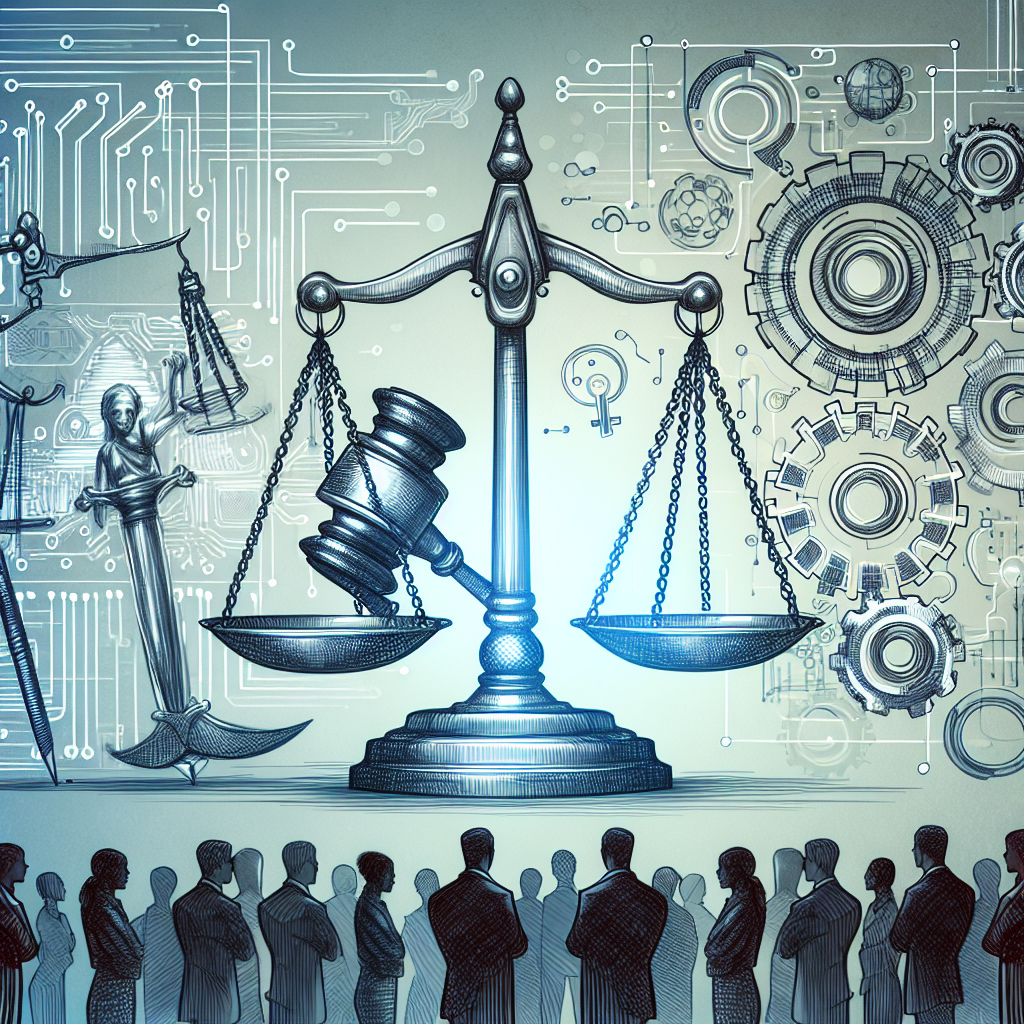The criminal justice system in many countries around the world is facing numerous challenges, from overcrowded prisons to racial disparities in sentencing. In recent years, there has been increasing interest in using artificial intelligence (AI) automation to help address some of these issues and improve the overall efficiency and fairness of the system. This article will explore the use of AI automation in criminal justice reform, discussing its potential benefits and drawbacks, as well as addressing some common questions and concerns about its implementation.
AI automation in criminal justice reform involves the use of algorithms and machine learning technologies to assist in various aspects of the criminal justice process, from identifying potential suspects to predicting recidivism rates. By analyzing large amounts of data and patterns, AI systems can help judges, lawyers, and law enforcement officials make more informed decisions and reduce bias in the system.
One of the main benefits of using AI automation in criminal justice reform is its potential to improve efficiency. AI systems can process vast amounts of data much faster than humans, allowing for quicker decision-making and reducing the backlog of cases in the system. This can help to ensure that individuals receive timely access to justice and prevent delays in the legal process.
Another advantage of AI automation is its ability to reduce bias in decision-making. Studies have shown that human judges and prosecutors can be influenced by factors such as race, gender, and socioeconomic status when making decisions in criminal cases. AI systems, on the other hand, can be programmed to make decisions based solely on objective criteria, reducing the risk of bias and discrimination in the system.
AI automation can also help to improve accuracy in the criminal justice system. By analyzing large amounts of data and patterns, AI systems can help to identify trends and predict outcomes more accurately than human judges or prosecutors. This can help to reduce the number of wrongful convictions and ensure that individuals receive fair and just outcomes in their cases.
Despite these potential benefits, there are also drawbacks and concerns associated with the use of AI automation in criminal justice reform. One of the main concerns is the potential for bias in the algorithms used in AI systems. If the algorithms are trained on biased data or programmed with biased assumptions, they can perpetuate and even exacerbate existing biases in the system. This can lead to unfair outcomes for individuals, particularly those from marginalized communities.
There is also concern about the lack of transparency and accountability in AI systems. Because AI algorithms are often complex and opaque, it can be difficult to understand how they arrive at their decisions and whether those decisions are fair and just. This lack of transparency can erode trust in the criminal justice system and raise questions about the legitimacy of AI automation in legal proceedings.
Another concern is the potential for job displacement in the criminal justice system. As AI systems become more prevalent in the legal field, there is a risk that they could replace human judges, lawyers, and other legal professionals. This could lead to job losses and exacerbate existing inequalities in the workforce.
Despite these concerns, there are steps that can be taken to mitigate the risks associated with the use of AI automation in criminal justice reform. One approach is to ensure that the algorithms used in AI systems are transparent and accountable. This can be done by requiring developers to document and explain how their algorithms work, as well as by subjecting them to external audits and reviews to ensure fairness and accuracy.
Another approach is to ensure that AI systems are used in conjunction with human judgment and oversight. While AI systems can help to improve efficiency and reduce bias in the system, they should not replace the judgment of trained legal professionals. Human judges and prosecutors should still have the final say in legal proceedings, with AI systems serving as tools to assist in decision-making.
In conclusion, the use of AI automation in criminal justice reform has the potential to improve efficiency, reduce bias, and enhance accuracy in the legal system. However, there are also concerns about bias, transparency, and job displacement that must be addressed to ensure that AI systems are used ethically and responsibly. By taking steps to mitigate these risks and ensure accountability, AI automation can be a valuable tool in promoting fairness and justice in the criminal justice system.
FAQs:
Q: How can AI automation help to reduce bias in the criminal justice system?
A: AI automation can help to reduce bias by analyzing data and making decisions based on objective criteria, rather than subjective factors such as race, gender, or socioeconomic status. By removing human biases from the decision-making process, AI systems can help to ensure that individuals receive fair and just outcomes in their cases.
Q: What are some potential drawbacks of using AI automation in criminal justice reform?
A: Some potential drawbacks of using AI automation in criminal justice reform include the risk of bias in algorithms, lack of transparency and accountability in AI systems, and job displacement in the legal workforce. These concerns must be addressed to ensure that AI systems are used ethically and responsibly in the criminal justice system.
Q: How can the risks associated with AI automation in criminal justice reform be mitigated?
A: The risks associated with AI automation in criminal justice reform can be mitigated by ensuring that algorithms are transparent and accountable, using AI systems in conjunction with human judgment and oversight, and subjecting them to external audits and reviews. These measures can help to ensure that AI systems are used ethically and responsibly in legal proceedings.

